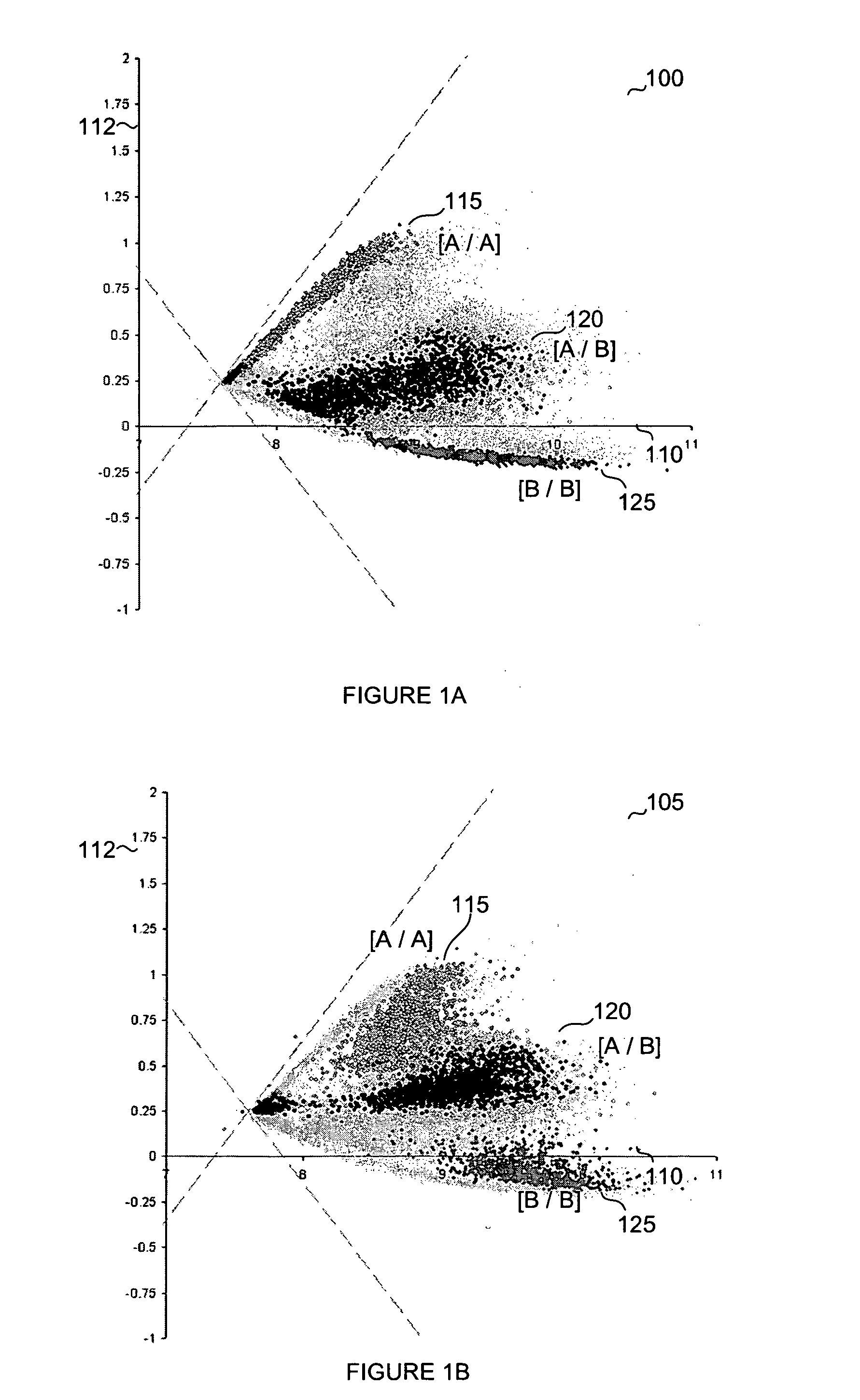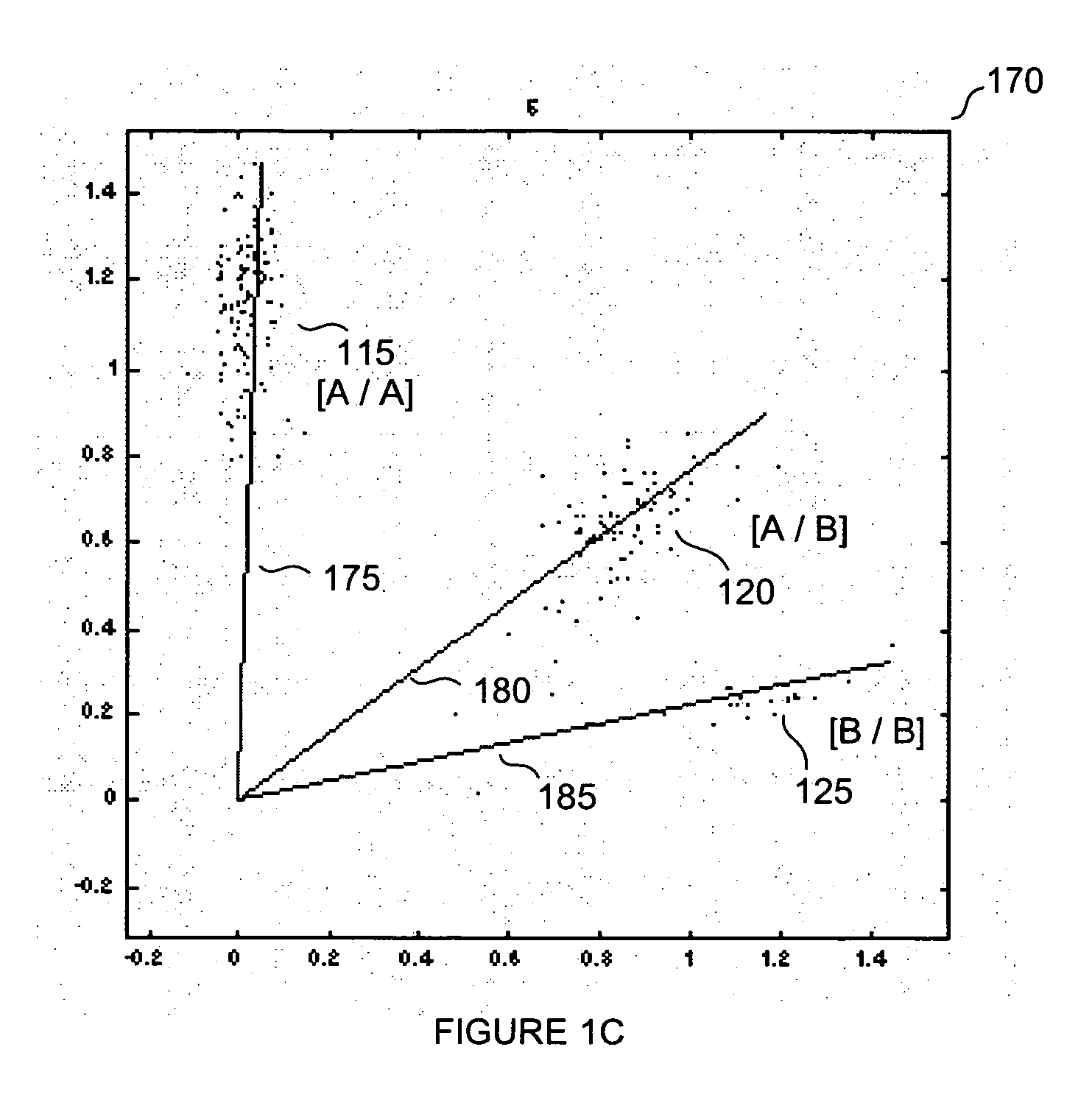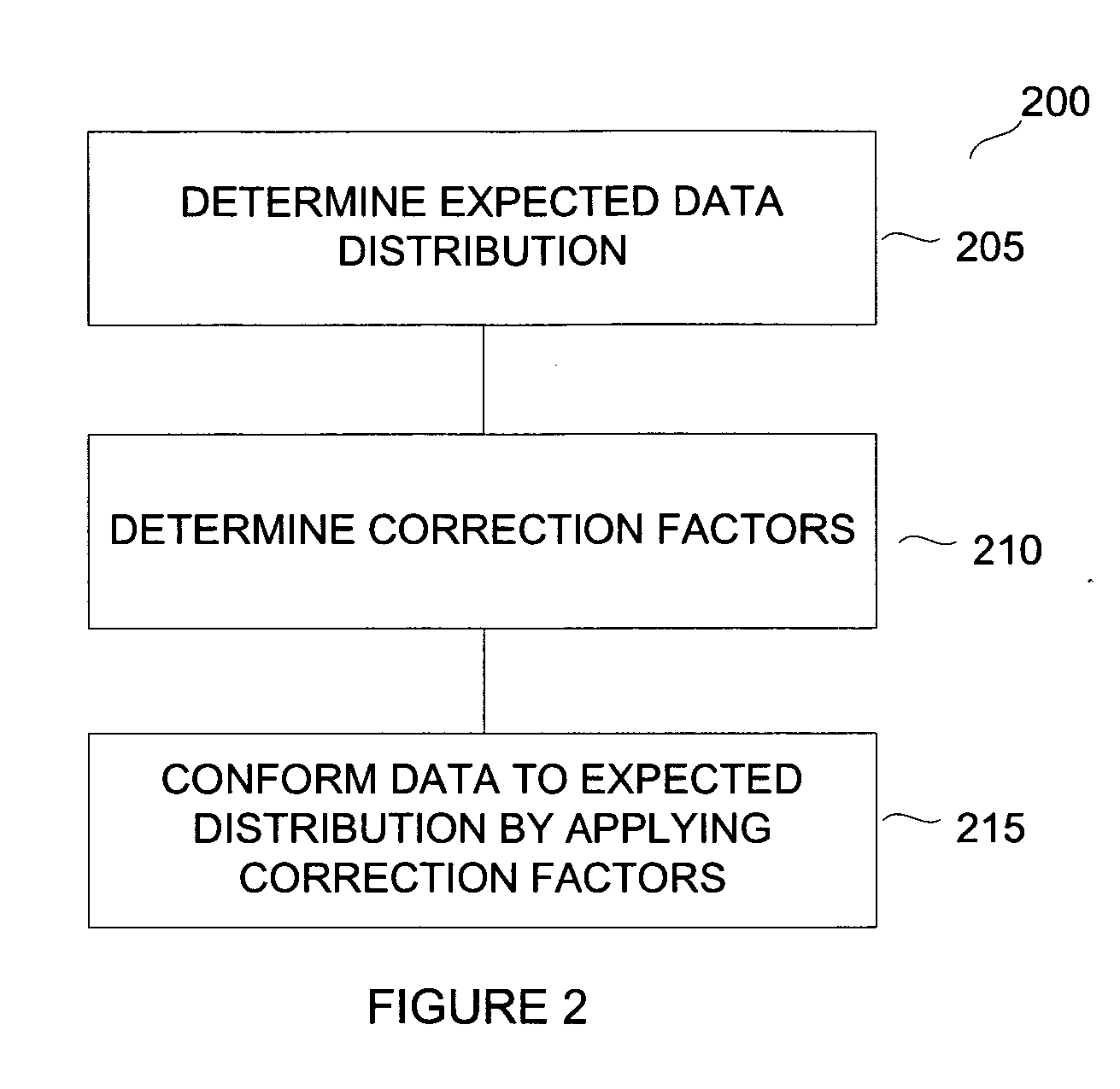Normalization methods for genotyping analysis
a genotyping analysis and normalization method technology, applied in the field of genotyping analysis, can solve the problems of reducing quantitative accuracy, reducing overall results confidence, and often confounding data resolution and analysis, and achieves the effects of convenient comparative analysis, simple and efficient, and convenient comparison and processing
- Summary
- Abstract
- Description
- Claims
- Application Information
AI Technical Summary
Benefits of technology
Problems solved by technology
Method used
Image
Examples
example 1
[0072] Example 1 represents the results obtained for a relatively small data set comprising 5 different SNPs in 6 samples. Fluorescence intensities between the two alleles for each SNP were determined. The fluorescence intensities were graphed such that one allele was represented on the x-axis and the second allele was represented on the y-axis. From this information, the polar angle was determined. These operations were performed for each SNP in each sample (see Table 1).
TABLE 1Sample Data:SampleSampleSampleSampleSampleSampleAngles123456SNP 1108515404580SNP 2122032460SNP 3111564045SNP 49034386510SNP 5884745707385
[0073] Using the aforementioned ranking approach each data point was ranked according to fluorescence intensity within its respective sample as shown in Table 2. In this case, the data point was ranked from lowest to highest angle. However, ranking could have similarly proceeded from highest to lowest. In general, the method of ranking will be similar for each sample.
TA...
example 2
[0075] Example 2 represents the results obtained for a larger data set wherein a SNP analysis was performed using fluorescence data obtained from 667 detectable SNPs. Using this information, an approximated accuracy assessment was determined before and after correction using the correction factor determination method described in connection with FIG. 3. Using this method, known SNPs were tested for call accuracy and the results plotted as a pie chart (see FIGS. 6A and 6B).
[0076] When evaluating the call accuracy over all loci for the selected set of SNPs without applying the correction factors, it was determined that approximately 42% of the SNPs (e.g. 283 SNPs) displayed a call accuracy below 95%. Of the remaining SNPs, 24% (e.g. 161 SNPs) demonstrated a call accuracy between 95%-99% and 33% (e.g. 223 SNPs) demonstrated a call accuracy greater than 99%.
[0077] However, after calculation and application of the correction factors as described by the present teachings a significant i...
PUM
 Login to View More
Login to View More Abstract
Description
Claims
Application Information
 Login to View More
Login to View More - R&D
- Intellectual Property
- Life Sciences
- Materials
- Tech Scout
- Unparalleled Data Quality
- Higher Quality Content
- 60% Fewer Hallucinations
Browse by: Latest US Patents, China's latest patents, Technical Efficacy Thesaurus, Application Domain, Technology Topic, Popular Technical Reports.
© 2025 PatSnap. All rights reserved.Legal|Privacy policy|Modern Slavery Act Transparency Statement|Sitemap|About US| Contact US: help@patsnap.com



